
Described as everything from stately, impressive, and regal to prehistoric looking, intimidating, and downright weird, shoebills definitely stand out. If you had never seen one before, you might not even think they were real. They stalk the vast wetlands of the Nile watershed in eastern Africa, often hidden in tall grasses and reeds. You can only see them at a few zoos, including at the San Diego Zoo Safari Park, and they make an unforgettable impression. Here are some things you may not know about these bizarre birds.
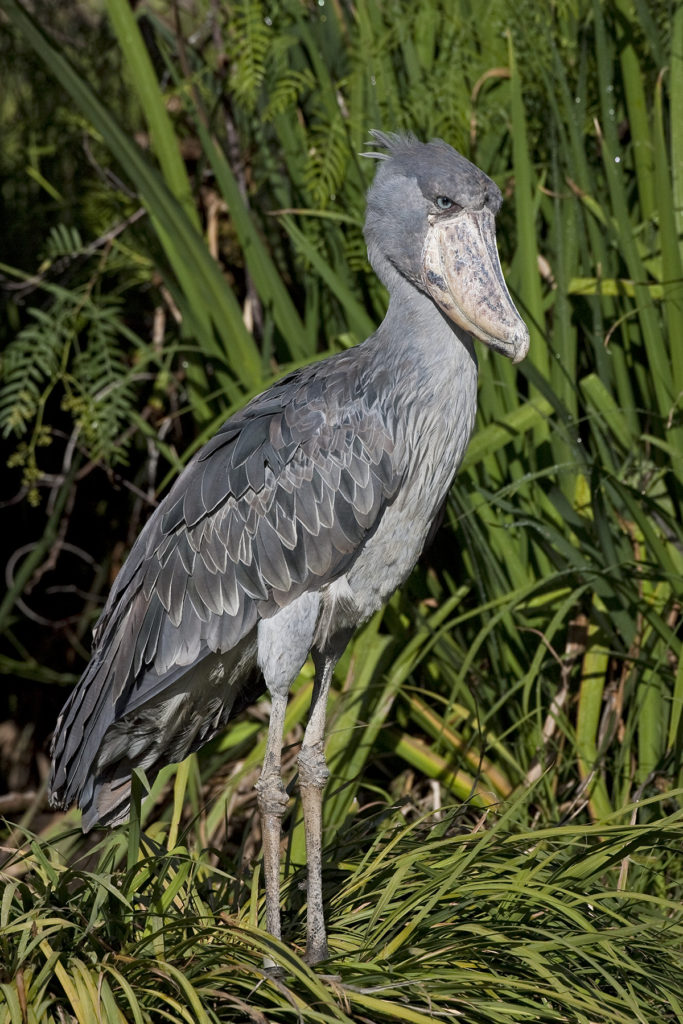
1. They go by many names.
The name shoebill comes from the shape of their bill, which looks a bit like a Dutch clog shoe. But taxonomists who described it also thought the bill shape resembled the head of a baleen whale, and named the species Balaeniceps rex—which means “whale-head king.” Other informal names for these birds are the boat bill, the bog bird, and the swamp king.
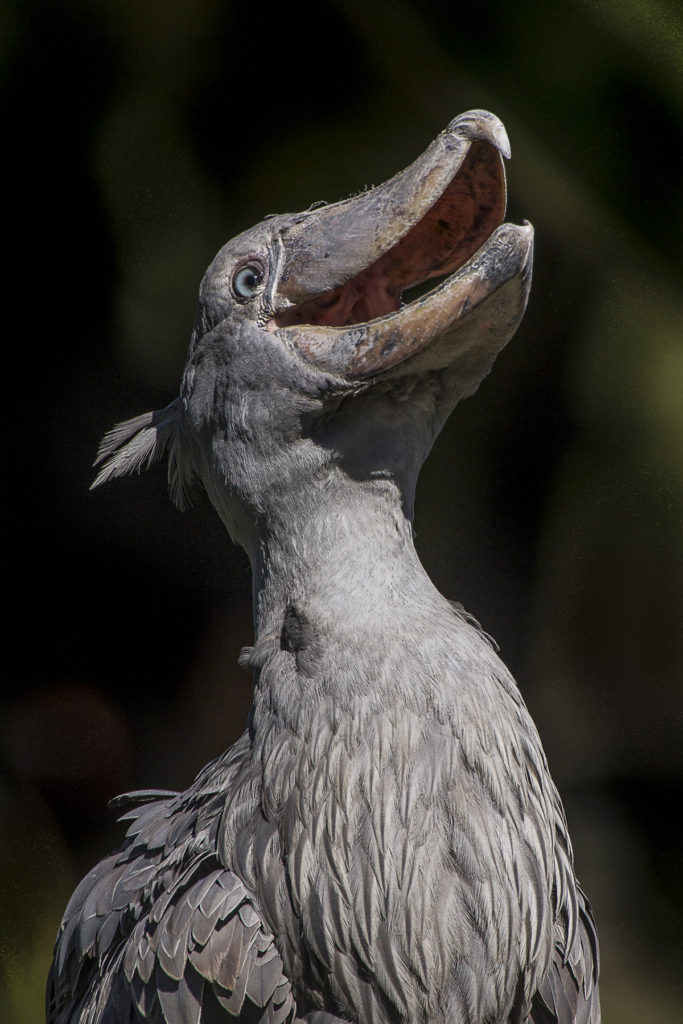
2. They have a kill bill.
With that enormous structure on their face, which can be nine inches long and four inches wide, shoebills might seem a little goofy. But don’t be fooled. That bill is a powerful tool, used to scoop up huge fish, stab them with the pointed hook on the end, and decapitate them with razor-sharp edges before swallowing.
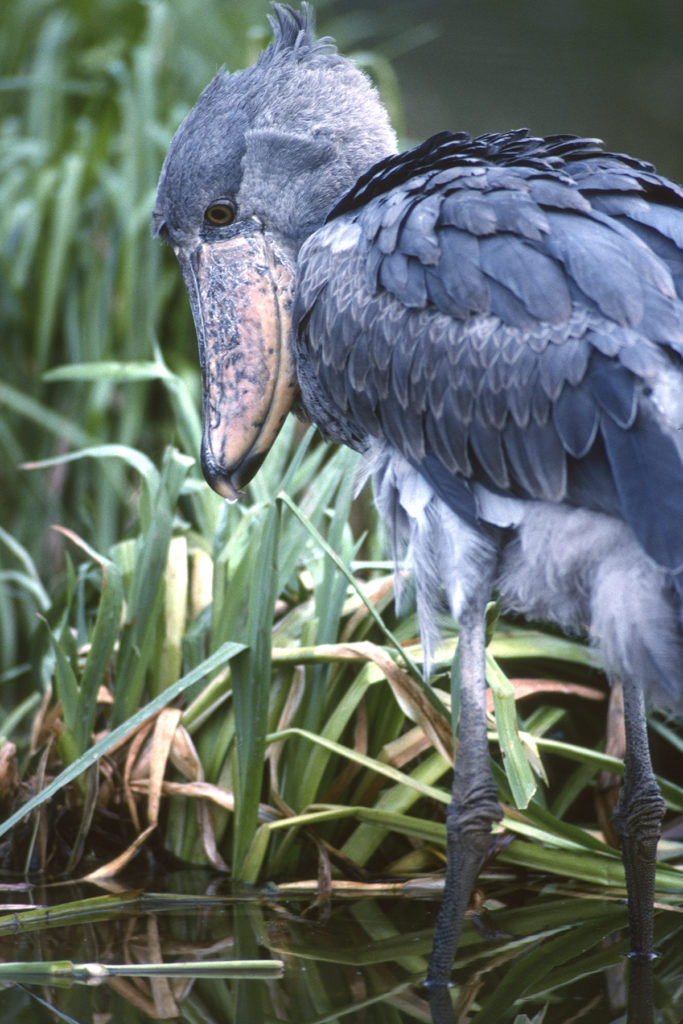
3. They could stare you down.
These birds are famous for standing motionless like a statue and staring intently into the water for hours at a time. They rarely blink, and the intensity of their golden-, green-, or blue-eyed gaze can be unnerving. Some have described it as the “death stare.” It’s a useful trait—the bird’s seemingly super-powered ability to focus means it can snare the best and choicest prey when it arrives.
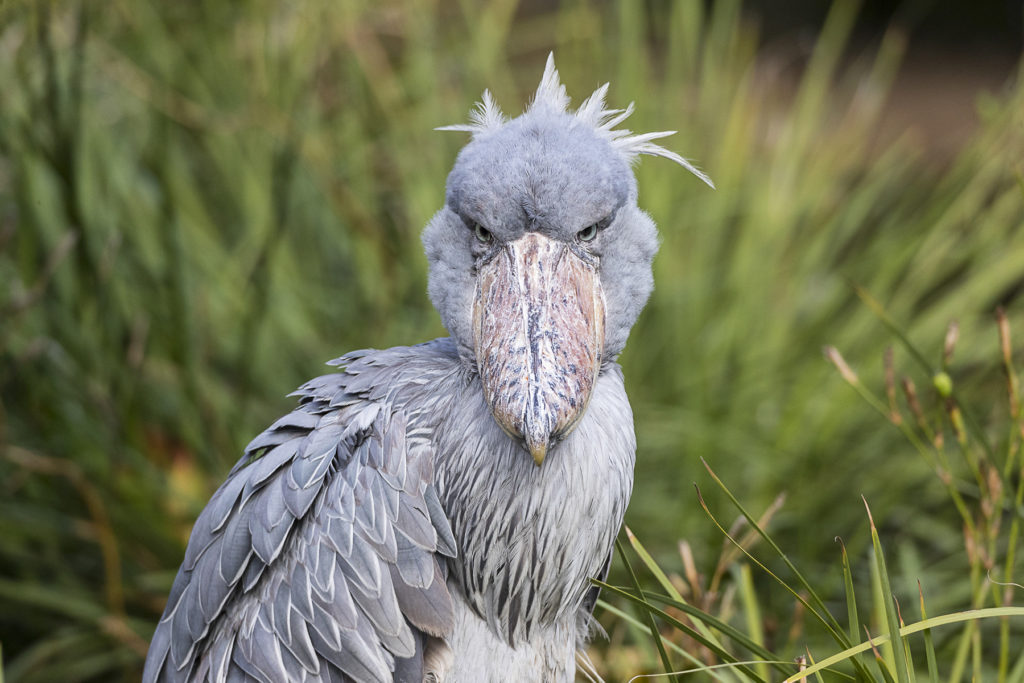
4. Their prey never sees them coming.
Shoebills are masters of patience. They stand still and silent in or next to water, waiting for the right moment. Then they suddenly lunge forward, spreading their wings and plunging down bill-first into the water to ambush a fish. This lunge is called “a collapse,” and it is unexpectedly swift, taking only seconds, and performed with great accuracy and power. In fact, the collapse can be so violent that the bird’s beak and thick skull act as shock absorbers to protect it against injury.
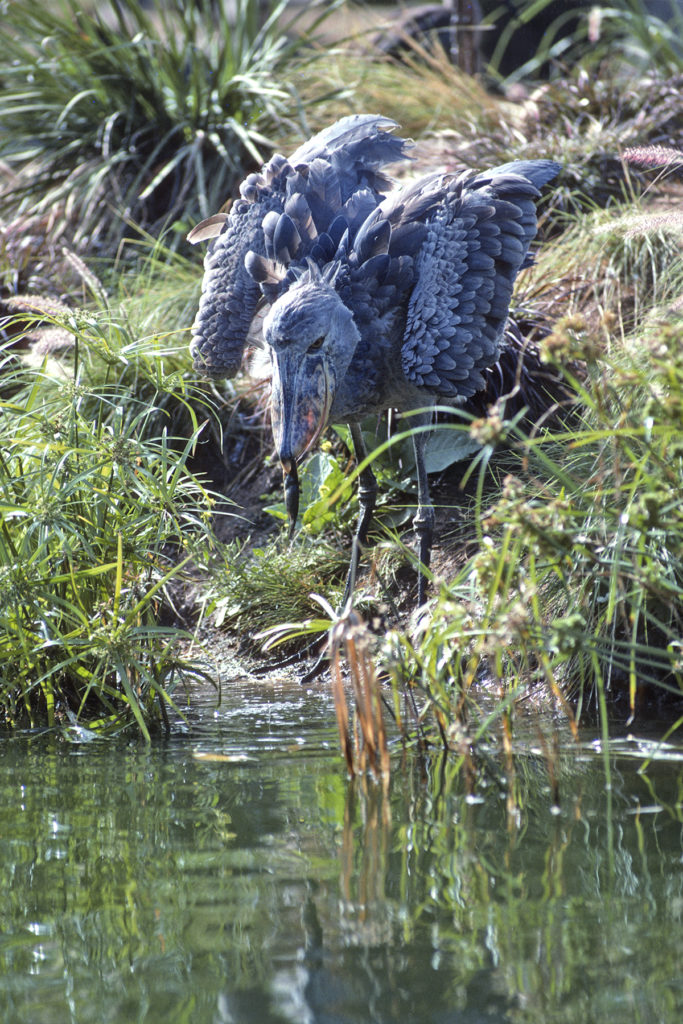
5. They eat what others can’t—or won’t.
The shoebill’s favorite food is the lungfish, a marsh and mud dweller that reaches six feet in length and weighs nearly eight pounds. That’s one heck of a catch! Shoebills also eat eels, catfish, water snakes, and even small crocodiles.
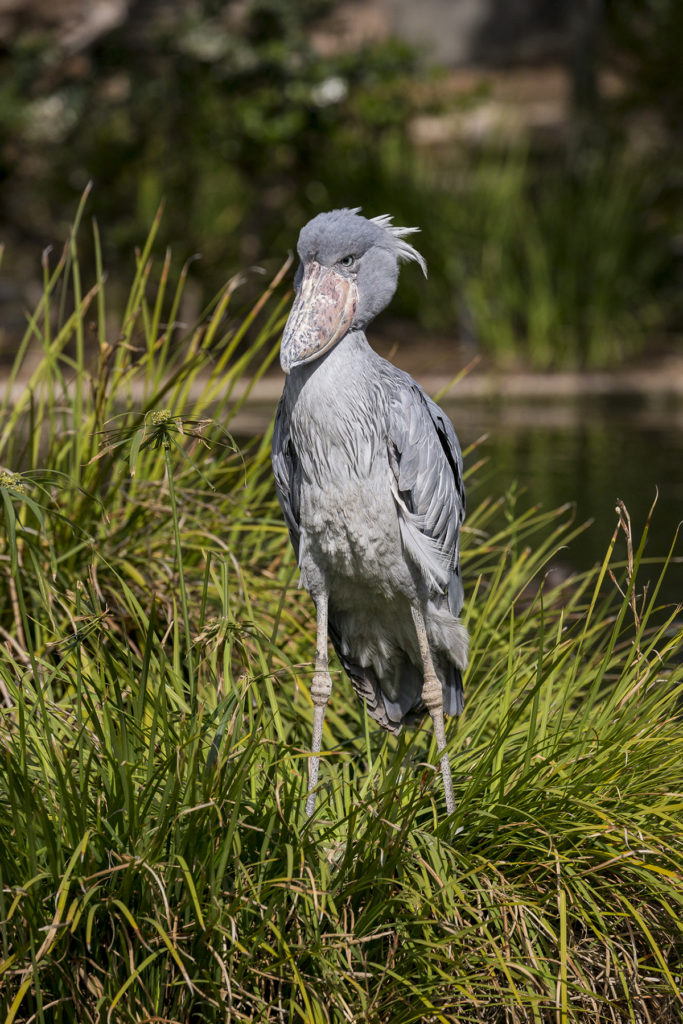
6. They’re bigger than they seem.
It comes as a surprise to many that the shoebill can be up to five feet tall. The bird is only inches shorter than an average person; if you stood next to one, it could almost look you in the eye. Couple that with an enormous wingspan of almost eight feet, and no wonder shoebills have an intimidating reputation. They aren’t very heavy, though, only weighing up to 16 pounds, and they can and do fly. But they only flap those big wings about 150 times per minute, one of the slowest rates of any bird.
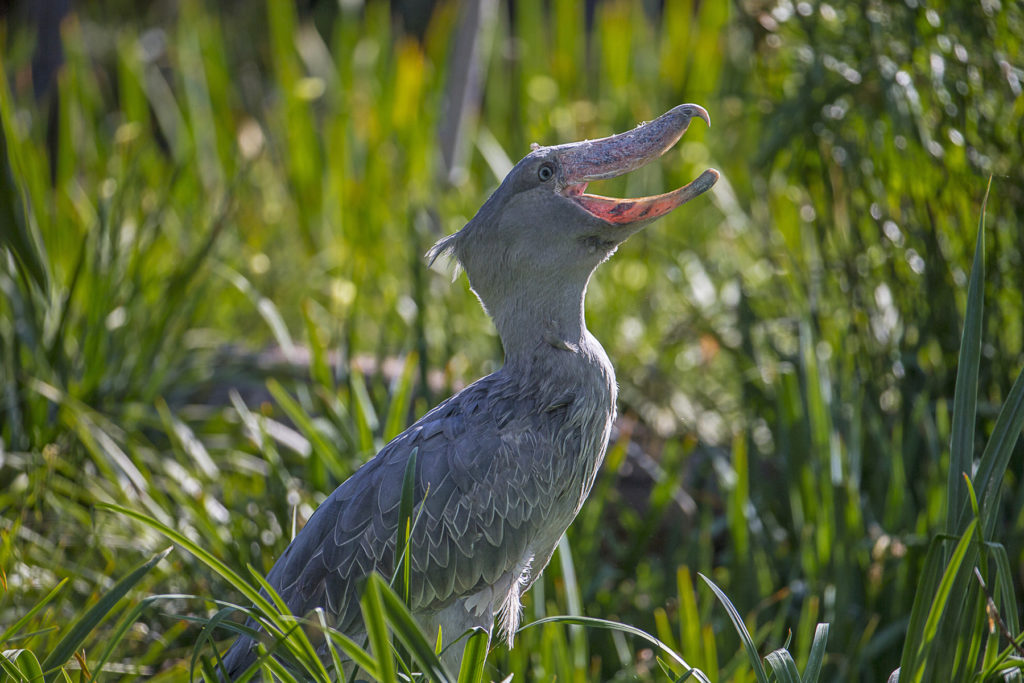
7. Their identity is elusive.
Ever since they were described by Western scientists, shoebills have been the subject of debate among naturalists and taxonomists. How to classify these odd birds? They ended up placing the shoebill in its own unique genus, but as part of the stork family. However, more recent studies, including DNA, show that the shoebill is actually more closely related to pelicans than storks. The shoebill surprises just keep coming!
Dive deeper into shoebill life here.
Karen Worley is a staff writer for San Diego Zoo Global. Read her previous blog, 11 Hoofed Animals Most People Have Never Heard Of.




